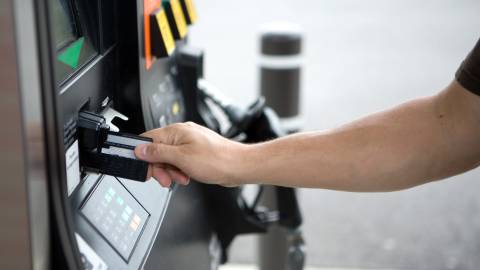Consumers have experienced a lot of pain at the pump recently, with gas prices soaring to over $5 a gallon in some areas. While those prices are starting to come down, a different financial crunch may be waiting for anyone looking to fill up: Some gas stations are placing a hold of up to $175 on credit and debit cards used as payment.

According to The Wall Street Journal, credit card issuers Visa and Mastercard have recently raised the allowable limit of money that gas stations can “freeze” or hold on a credit or debit account. The maximum of $175, which is up from $125, allows gas stations to make sure the person pumping gas has the funds for a fill-up.
But not all consumers are aware of the hold. If they’re close to their credit or debit limits, it might put them at risk of overdraft fees or a card rejection—if not at the pump, then when they go to use their card elsewhere. While the hold should lift after a few hours, it can take days in some instances. (How long depends on both the gas station and your issuing bank.)
If you’re uncomfortable with the idea of a gas station sitting on your funds, there are two workarounds. The first, obviously, is to pay cash. The second is to pre-pay inside the gas station, informing the clerk you want to buy gas at a pre-set amount. The purchase will be authorized for that amount of money and the pump will switch off once you’ve reached that total. The hold doesn’t apply to pre-paid amounts.
In addition to avoiding overdraft fees, you can save at the pump by skipping premium fuel—many cars won’t benefit from it—using a gas app with a rewards program, and making sure your car is up-to-date on maintenance. Under-inflated tires and extra cargo can all decrease fuel efficiency.
[h/t NJ.com]
Related Tags
MONEY NEWS CARS LIVE SMARTER BANK
